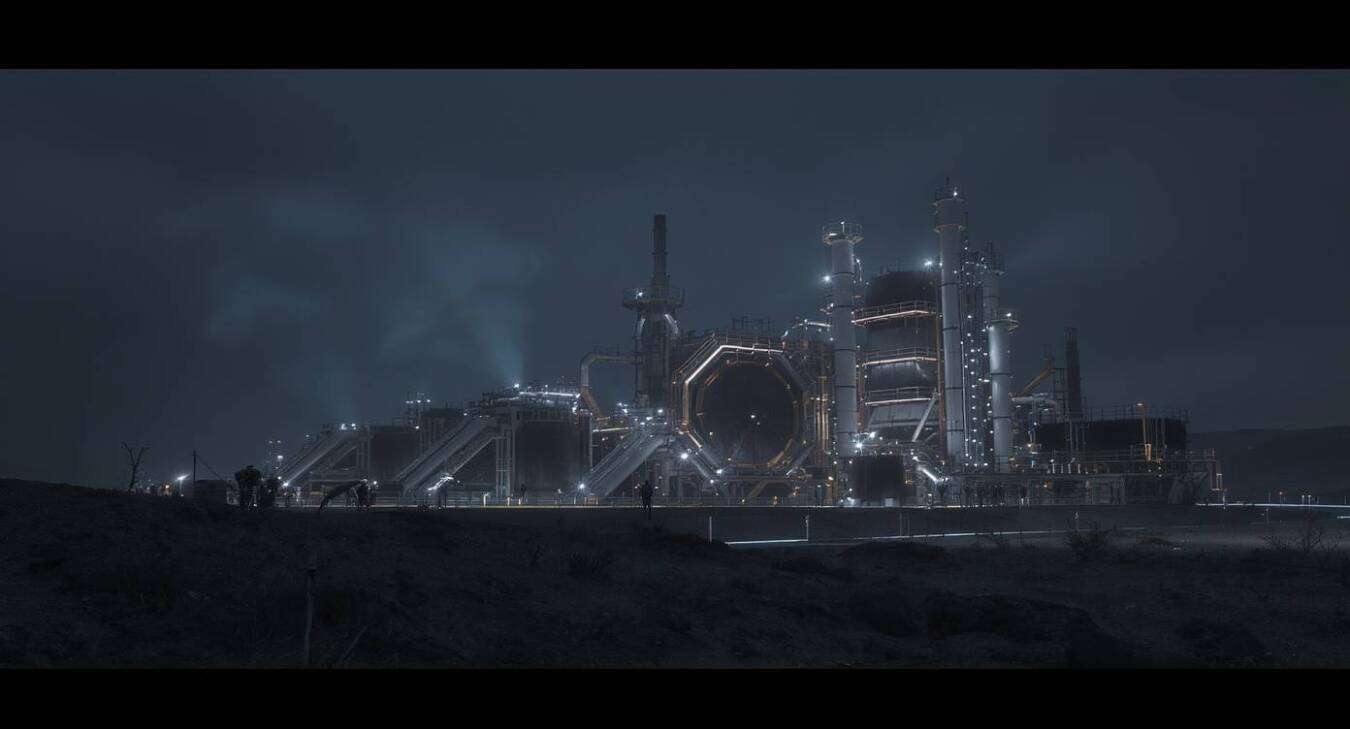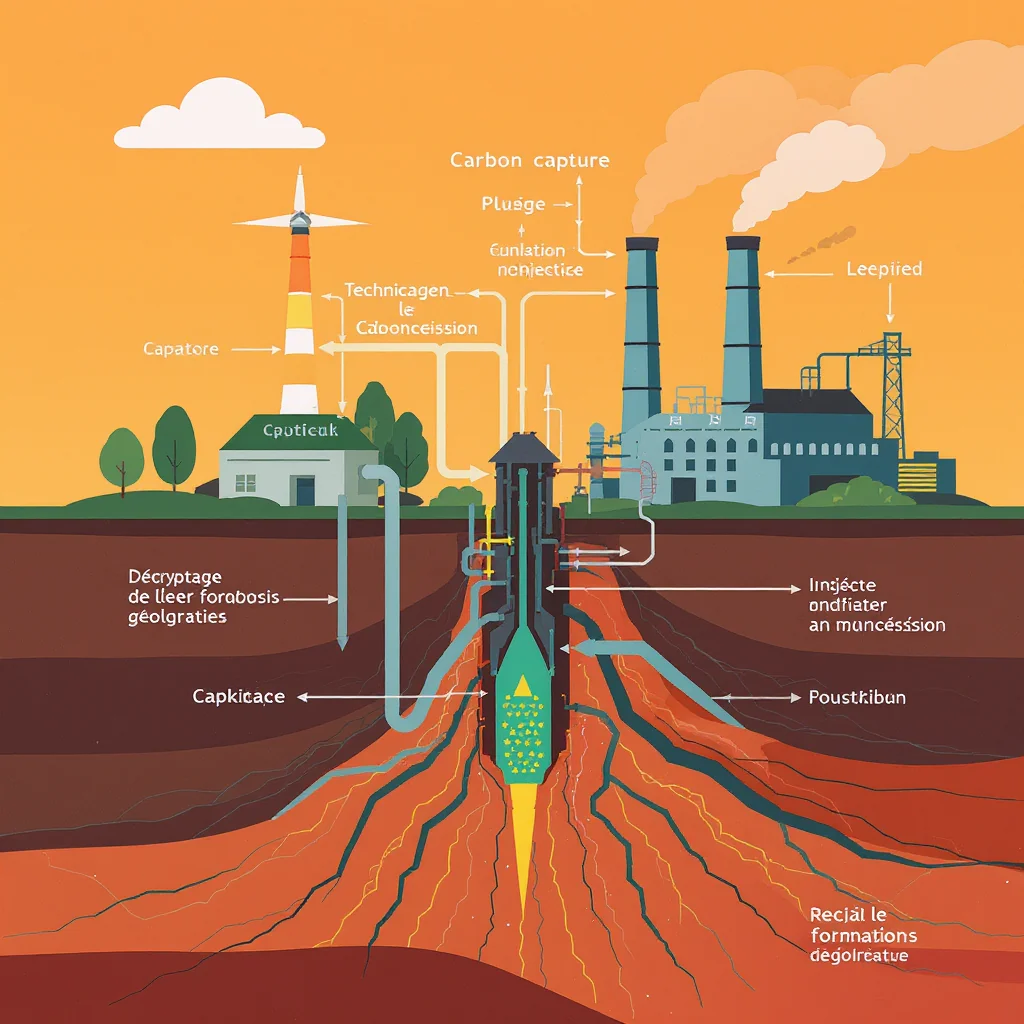Carbon Capture: a technological gamble under pressure
By 2024, carbon capture — capture and storage of carbon (CCS) — is becoming a key topic in debates on energy transition. According to the Global CCS Institute, 41 major industrial projects were in operation in 2023, capable of capturing nearly 50 million tons of CO2 per year [Global CCS Institute, 2024]. But this figure remains marginal compared to the 37.4 billion tons of CO2 emitted globally in 2023 [IEA, 2023]. Governments are investing heavily: the United States has allocated more than 12 billion dollars to carbon capture under the Inflation Reduction Act [energy.gov]. Yet, the question remains: does carbon capture really slow down climate change or does it give a new lease of life to the fossil industry?
Technically, carbon capture involves extracting CO2 from industrial emissions or directly from the air, before injecting it into deep geological formations. But the challenges are numerous: high cost (from 50 to 120 $/ton), energy consumption, leakage risks, long-term storage [MDPI, 2022]. “It’s a promising but still immature technology,” says Dr. Michel Dufour, a specialist in geological storage. The oil sector mainly uses it for EOR (Enhanced Oil Recovery), a method that uses CO2 to extract more oil — paradoxically, prolonging the life of oil fields [AAPG Bulletin, 2024].
Critics are firing: for many, carbon capture serves as an ecological alibi, slowing down the exit from hydrocarbons. But some startups are innovating, like Climeworks or CarbonCure, betting on direct air capture or mineral storage of CO2 in concrete. This proliferation of initiatives testifies to a global race, where industrial interests, climate imperatives, and citizen pressures are intertwined. Will carbon capture be the decisive tool or a costly mirage? The answer will depend on its ability to industrialize without maintaining dependence on fossil fuels.
Controversies around carbon capture and its real effects
Carbon capture occupies an ambiguous place in national and international strategies. For the International Energy Agency (IEA), it would be necessary to capture and store 1.2 billion tons of CO2 per year by 2030 to hope to achieve carbon neutrality by 2050 [IEA Net Zero Roadmap, 2023]. But industrial projects struggle to move beyond the pilot stage, and costs remain prohibitive for many players.
The question of the real effectiveness of carbon capture is divisive. According to a study published in Renewable and Sustainable Energy Reviews, most current installations serve the fossil industry, notably for EOR, with a sometimes negative final carbon balance [ScienceDirect, 2020]. Leakage risks, uncertainties about the durability of storage, and the difficulty of capturing diffuse CO2 from the agricultural or transport sectors limit the overall impact. “We must not see carbon capture as a miracle solution, but as one tool among others,” estimates climatologist Rachel Hugues.
Startups and innovations in carbon capture
Faced with these limits, startups stand out by innovating. Climeworks, in Switzerland, bets on direct capture from the atmosphere with small modular units, while CarbonCure integrates CO2 into concrete, mineralizing it in a stable way [GlobalCCSInstitute, 2024]. Others, like Carbfix in Iceland, inject CO2 into basalt, where it turns into rock in less than two years. These initiatives show that carbon capture can break away from the oil sector, but they face industrial scale and deployment costs.
Towards a sustainable future: carbon capture as a complementary tool
For the future, carbon capture can only play a decisive role in addition to a massive reduction in the consumption of fossil fuels. The prospects are encouraging if the technology is accompanied by real efforts in energy efficiency and the deployment of renewables [energy.gov]. Public policies must strictly regulate the use of carbon capture, favoring permanent storage and banning abuses related to EOR.
The challenge is also social: carbon capture must not become an excuse to delay the conversion of territories dependent on oil or coal. It will be necessary to train, support, invest in research and support local ecosystems. It is under this condition that carbon capture can contribute to carbon neutrality, without sacrificing the future to the unfulfilled promises of industrialists. The key lies in the balance between innovation, scientific rigor, and climate justice.

Sources
https://www.mdpi.com/1996-1073/15/3/887
https://www.energy.gov/carbon-capture-utilization-storage
https://www.netl.doe.gov/carbon-management/carbon-storage/faqs/carbon-storage…
https://iea.blob.core.windows.net/assets/13dab083-08c3-4dfd-a887-42a3ebe533bc…
https://pubs.geoscienceworld.org/aapg/aapgbull/article-abstract/108/2/215/632…
https://www.globalccsinstitute.com/wp-content/uploads/2024/10/2024-GSR_202410…
https://www.sciencedirect.com/science/article/abs/pii/S1364032120307978
https://www.sciencedirect.com/science/article/pii/S1750583623002098
https://www.lemonde.fr/planete/article/2023/11/10/technologie-de-capture-du-c…
Analyse journalistique sur la controverse autour de la carbon capture
https://www.climeworks.com/carbon-removal
https://www.carboncure.com/
https://www.mdpi.com/1996-1073/15/3/887
https://www.energy.gov/carbon-capture-utilization-storage
https://www.netl.doe.gov/carbon-management/carbon-storage/faqs/carbon-storage…
https://iea.blob.core.windows.net/assets/13dab083-08c3-4dfd-a887-42a3ebe533bc…
https://pubs.geoscienceworld.org/aapg/aapgbull/article-abstract/108/2/215/632…
https://www.globalccsinstitute.com/wp-content/uploads/2024/10/2024-GSR_202410…
https://www.sciencedirect.com/science/article/abs/pii/S1364032120307978
https://www.sciencedirect.com/science/article/pii/S1750583623002098
https://www.lemonde.fr/planete/article/2023/11/10/technologie-de-capture-du-c…



